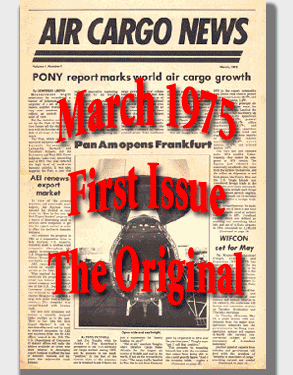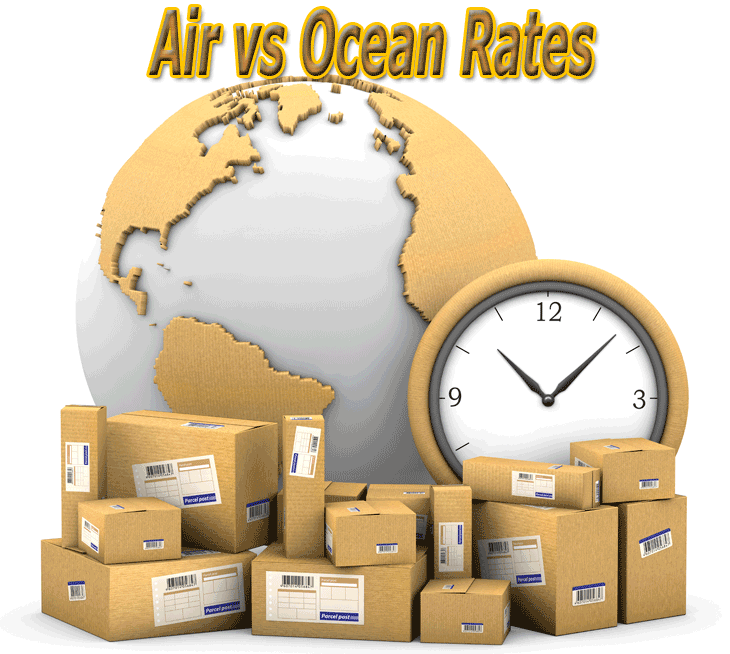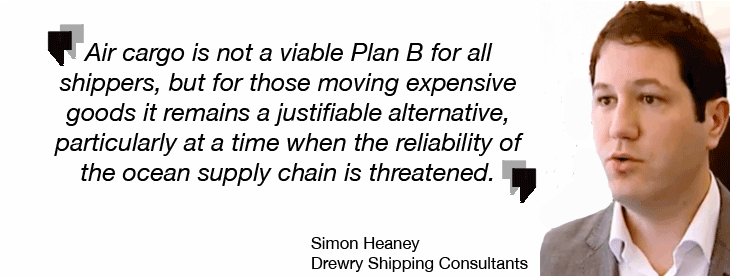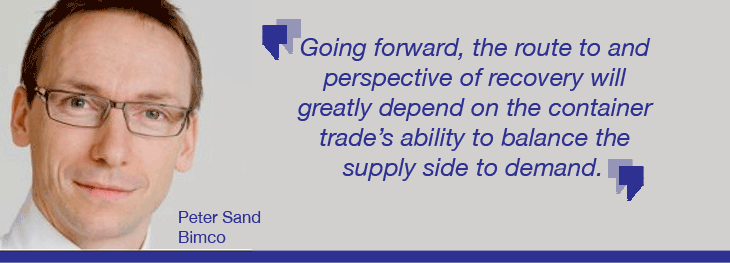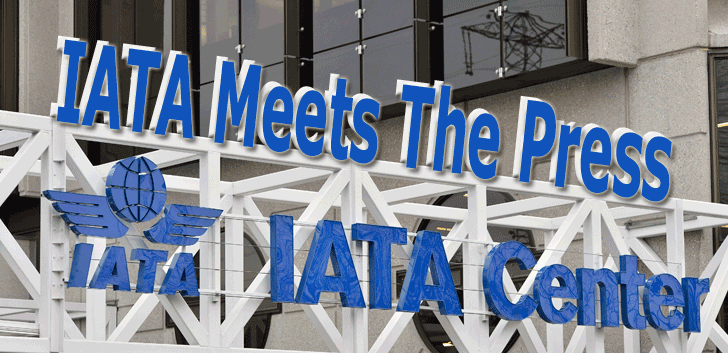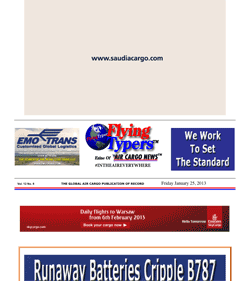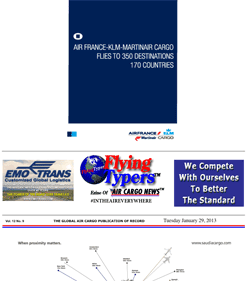 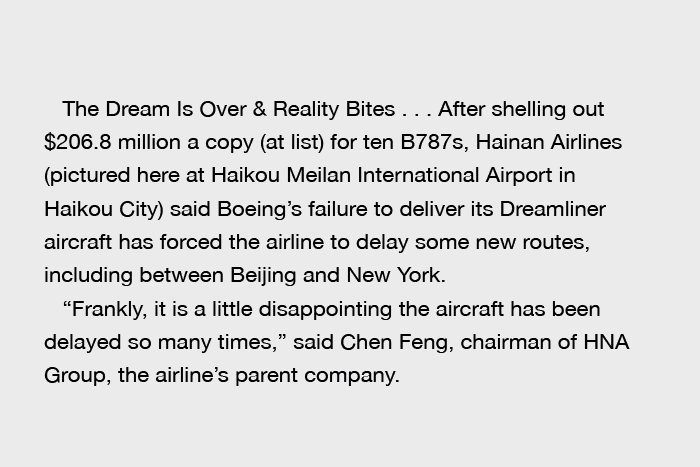 |
Editor’s
Note: On
December
13, 2012,
IATA held
its Annual
Media Day
event in
Geneva,
Switzerland,
with scores
of global
press in
attendance—including
FlyingTypers.
|
 |

Having
warmed up
the crowd
with the
most fundamental
and all-important
criteria—safety—IATA
Director
General
and CEO
Tony Tyler
and Chief
economist
Brian Pearce
delivered
the “State
of the Industry
and Global
Economic
Outlook.”
The
key topics
addressed
were safety,
financial
performance,
the benefits
of aviation,
the environment,
regulation,
taxes, infrastructure,
security,
and simplifying
the business.
Subsequently,
more detailed
presentations
followed.
Addressing
the industry
financial
performance,
the DG remarked
that the
$4.1 billion
anticipated
profit in
2012 could
now be revised
to $6.7
billion
for the
year, along
with an
estimated
up to $8.4
billion
foreseen
for 2013.
"High
fuel prices
have become
of fact
of life"
and "cargo
growth has
been stagnant,"
said Mr.
Tyler.
While
making the
point that
the positive
uptick was
good news,
Mr. Tyler
said that
the result
reflected
a 1 percent
profit margin
for the
industry,
which had
to be kept
in perspective
against
the need
for a 7-8
percent
margin to
cover the
costs of
capital.
“The
industry
is keeping
its head
above water.
But only
just. It’s
a tough
business
working
hard to
make it
through
tough times,”
said Mr.
Tyler.

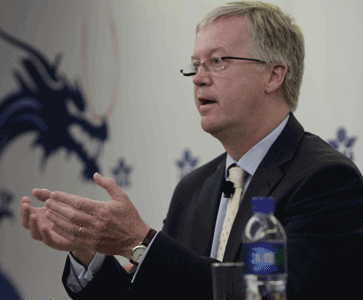 IATA
Chief Economist
Brian Pearce
picked up
from there
and noted
that air
freight
used to
be a good
indicator,
but "that's
not the
case this
time and
the divergence
has more
to do with
the pattern
of economic
growth.
IATA
Chief Economist
Brian Pearce
picked up
from there
and noted
that air
freight
used to
be a good
indicator,
but "that's
not the
case this
time and
the divergence
has more
to do with
the pattern
of economic
growth.
“We
will not
see air
freight
recover
to any extent
until the
economy
rebounds.”
Pearce
pointed
out that
business
confidence
has declined
but is consistent
with the
slower pace
of growth,
while travel
markets
are still
expanding.
RPK show
wide variations
with growth
led by China,
India dropping
off, the
U.S. flat
[mature
market],
and Japan
in [long
term] decline.
The
Japanese
domestic
market has
never fully
recovered
from the
tsunami.
RPK carried
by U.S.
carriers
is no higher
than it
had been
in 2008.
In
terms of
net profits,
2 percent
has traditionally
been the
'stall speed'
for airline
financial
performance.
The largest
airlines
in all the
regions
have been
generating
2006 equivalent
revenues.
Airlines
managed
to keep
cash flowing
despite
very difficult
economic
times; the
exception
is air cargo—load
factors
are low
"flying
around half-empty"
whereas
utilization
has been
high for
the passenger
business.
Fewer
new airlines
are being
set up and
consolidation
continues;
the U.S.
is left
with 4 majors.
Oil
prices continue
to outpace
world trade
growth while
the industry
outlook
shows further
expansion
for travel,
with around
3.1 billion
passengers
in 2013.
The U.S.
is expected
to drive
a moderate
growth in
cargo volumes.
Mr.
Pearce also
said that
"we
see modest
improvement
in profitability;
the American
airlines
are performing
relatively
well, while
the European
airlines
continue
to struggle,
yet the
downward
pressure
is starting
to ease;
it is still
a very risky
environment,
particularly
in Europe."

In
a “Sun
Will Come
Out Tomorrow”
moment,
DG Tyler
remarked
that “2013
will be
the 100th
year for
civil aviation,
a milestone
with 57
million
jobs globally
and a catalyst
for global
expansion
with 2.2
trillion
in economic
activity.
"Industry
potential
to grow
is strong,
with the
majority
of that
growth in
developing
markets.
“We
need the
right regulation,
and tax
and growth
must be
environmentally
sustainable.
“The
targets
include
improving
fuel efficiency
by 1.5 percent
annually
to 2020,
to cap net
emissions
from 2020
with carbon-neutral
growth,
and to cut
emissions
in half
by 2050,”
said Mr.
Tyler.

IATA
pointed
out that
the European
Union's
Emissions
Trading
Scheme (EU-ETS)
has polarized
the world;
with the
clock now
stopped,
at ICAO
negotiations
have moved
into high
gear to
develop
a global
approach.
“There
will be
pressure
on the airlines,
which will
be a challenge,
and fleet
age and
composition
will drive
the outcome.
“What
is needed
are more
efficient
routes and
progress
on the ‘long
delayed’
Single European
Sky.
“There
are just
bureaucratic
agreements
that have
produced
very little
in the way
of real
efficiencies.
“The
combination
of several
national
airspace
control
entities
to reduce
the cost
base has
been touted,
but none
of that
has been
done.
“The
targets
the commissioners
fought for
are welcome
and are
more ambitious,
but the
states need
to take
steps to
achieve
these targets.
“The
present
state-of-affairs
is less
than disappointing,
while the
industry
wastes billions
of dollars
and burns
fuel unnecessarily
due to lack
of political
will and
effort to
act decisively.
“IATA
has been
defending
changes
to regulations,
such as
the slot
system rules
regarding
‘use-it-or-lose-it’
that were
to be globally
changed
to 85-15
[ratio of
flights
operated
versus slots
allocated]
from the
accepted
80-20,”
said Mr.
Tyler.
The
word was
just in
from the
European
Parliament
that the
80-20 system
had been
preserved.
Similar
work is
underway
in China,
Columbia,
India, Mexico,
Poland,
the UK,
and the
U.S.

Passenger
rights and
legislation
are a major
issue worldwide
and concern
with national
regulations
present
a challenge.
Recently
legislation
was put
in place
in Israel
(and next
in the Philippines),
which IATA
thinks will
result in
confusion
for passengers
transiting
on intercontinental
flights.
If additional
countries
develop
their own
tactic instead
of a harmonized
global approach
it will
have the
same impact.
Taxation
is crippling
the airlines,
IATA said,
vowing that
it will
continue
to fight
governments
on the issue.
Infrastructure
is another
area where
growth can
be facilitated
or inhibited
in terms
of cost
and availability.
IATA reported
that their
action resulted
in some
progress
in India
and Brazil,
removing
airport
development
fees.
Addressing
security,
IATA noted
a big bottleneck
in the travel
process.
IATA has
developed
detailed
definitions,
comparing
tests at
AMS, LHR,
and GVA
airports
focused
on identity
and document
verification.
Desired
outcomes
will be
supported
by the "Checkpoint
of the Future"
concept
for which
blueprints
have been
developed
and approved
with the
aim of having
the first
version
tested operationally
in 2014.

Another
program,
Simplifying
the Business
(StB), initially
focused
on improving
service
and cutting
costs.
It
has been
developed
further
and a white
paper produced
entitled
"NDC
- new distribution
capability,"
which describes
what travel
will look
like in
2020 and
outlines
what to
do to enable
innovation
and invite
competition.
It
encompasses
developing
standards
for more
modern systems
to facilitate
new entrants
into the
market and
create new
opportunity
for within
the travel
distribution
arena, including
the GDSs.
In
responding
to questions,
the DG made
the following
points:
•
There
is a shortage
of finance
in Europe
for aviation.
•
While
it holds
promise,
it is difficult
to achieve
synergies
and consolidation.
•
European
airline
CEOs are
the gloomiest
bunch, exhibiting
deeply-felt
frustration
with regulations
that grind
them down.
•
Infrastructure
privatization
needs robust
regulation
and consultations
with the
users in
light of
excesses
seen in
Brazil and
Portugal.
•
The
intensely
competitive
nature of
the airline
industry
has been
a drain
on profit
margins
and the
industry
has never
made money.
•
Q1
2013 “The
Bankruptcy
Season”
could see
further
culling
of weaker
carriers.

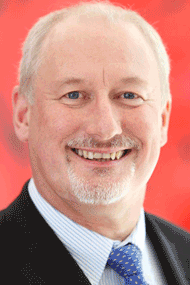 Paul
Steele,
Director
of Montreal-based
(Air Transport
Action Group)
Aviation
Environment
Group, presented
“Meeting
Aviation’s
Environmental
Commitments”
and elaborated
on the points
raised by
Tony Tyler.
Paul
Steele,
Director
of Montreal-based
(Air Transport
Action Group)
Aviation
Environment
Group, presented
“Meeting
Aviation’s
Environmental
Commitments”
and elaborated
on the points
raised by
Tony Tyler.
Paul
said, “aviation
is the only
industry
to have
set specific
targets—50
percent
reduction
in net emissions
by 2050
(CNG - carbon
neutral
growth).
“Aviation
uses 10
percent
of the total
liquid transportation
fuel globally;
therefore
delivering
biofuels
to aviation
is a smaller
challenge
than delivering
biofuels
to other
transport
sectors
in general.”
Aviation
“has
a highly
concentrated
distribution
system with
190 airports
covering
80 percent
of passenger
traffic.”
Contrast
that with
161,768
gas stations
in the U.S.
Over 1,500
passenger
flights
with biofuel
have taken
place, with
the main
challenges
remaining
“the
valley of
death”
being full-scale
commercialization,
production,
and delivery
to aircraft,
and the
price.
In
order to
move from
laboratory
scale production
to full-scale
production
around the
world, the
government
must support
industry
efforts.

Biomass
in Europe,
for instance,
is directed
at producing
bio-diesel
instead
of focusing
on the stated
strategy
of electrifying
the road
transport
sector.
In response
to a FlyingTypers
question
regarding
the foreseen
global limits
on the availability
of water
supply needed
for food
production,
which may
impact water
use to produce
aviation
biofuel,
Paul stated
that the
industry
is looking
at a variety
of approaches.
This includes
using many
types of
biomass,
including
cooking
oil, wastes,
and not
necessarily
the components
or types
of fuel
used for
automotive
fuel supply.
The
EU ETS freeze
does not
exclude
flights
within Europe
and there
is an automatic
snap-back
clause if
no progress
is achieved
at ICAO
through
negotiations.
Comprehensive
agreement
is needed
to head
off national
and regional
initiatives
that will
be disruptive
and counterproductive
for the
industry.

There
was no mention
of aviation
coming out
of the UN
Climate
Change Conference
in Doha,
which ignored
the progress
made at
ICAO for
a new CO2
standard
for new
aircraft
types to
certify
fuel efficiency.
The ICAO
Council
was mandated
to pursue
the feasibility
of a single
global scheme
and develop
a framework
for states
to implement
harmonized
national
measures.
The
single scheme
proposals
being evaluated
consist
of a mandatory
offsetting
scheme,
a fund to
be reinvested
back into
the industry
to develop
biofuel
and/or assist
countries
to develop
a scheme,
and a global
emissions
trading
scheme modeled
after the
EU ETS.
The
ICAO approach
suggests
a global
framework
rather than
a patchwork,
yet it remains
extremely
difficult
to accommodate
the needs
of various
players
from developed
and developing
countries
in a unified
regime.


Eric
Leopold,
(left) the
IATA Director
Passenger
delved into
the future
travel distribution
concepts
and talked
about NDC,
The Next
Big Thing
in Airline
Retailing.
IATA developed
a mock-up
“Build
Your Trip”
website
for a passenger
using NDC
(new distribution
capability),
a customer-centric
concept
and approach.
A pilot
is planned
for the
end of 2013
with investment
from a wide
variety
of stakeholders
including
GDS, IT
companies,
and airlines.
The
aim is to
bring a
“retail”
experience
when shopping
for travel
products,
more Amazon-like
than GDS.
Eric concluded
by saying
that “historically,
standards
and innovation
mean lower
fares.”

With
a cargo
hat on,
yours truly
found the
most stimulating
presentation
to be “Understanding
our Passengers
and Improving
the Travel
Experience,”
a collaborative
effort by
Mike Muller,
IATA Head,
Interline
& Intermodal
Policy;
Paul Behan,
Head, Passenger
Experience;
and Yanik
Hoyles,
Head Business
Development.
It
drew the
clearest
and most
stark contrast
between
where the
passenger
business
is headed
vis-à-vis
the cargo
business,
which is
still stuck
in trying
to get the
present
to work
more efficiently.
These
people work
on transformational
programs
and explained
their approach,
starting
with the
2012 World
Passenger
Symposium
where NDC
was discussed
for more
than one
day.
Simplifying
the Business
(StB) is
a think
tank—5
airlines
(AF, BA,
DL, EK,
NZ) HP,
Expedia,
Oracle,
Amadeus,
ITA, and
LEK, all
worked for
two years
to develop
the vision
crystalized
in five
goals that
“will
enable us
to get close
to the vision
described
in the paper.”
A new StB
brochure
has been
made available
by IATA.
 Paul
Behan (right)
talked about
the social
media-driven
IATA survey,
which over
a 12-month
period engaged
3,000 participants
from more
than 130
countries
[17 percent
North America,
36 percent
Europe,
17 percent
Asia-Pacific,
21 percent
South America,
and 9 percent
Middle East
and Africa]
to communicate
what actual
travelers
would like
to see improved.
Paul
Behan (right)
talked about
the social
media-driven
IATA survey,
which over
a 12-month
period engaged
3,000 participants
from more
than 130
countries
[17 percent
North America,
36 percent
Europe,
17 percent
Asia-Pacific,
21 percent
South America,
and 9 percent
Middle East
and Africa]
to communicate
what actual
travelers
would like
to see improved.
Fast
travel,
an initiative
that would
give passengers
more control
over the
journey
through
self-check-in,
self-bag-tag,
and self-boarding,
as well
as the use
of passenger
data to
facilitate
travel,
and the
real-time
interaction
between
passengers
and travel
service
providers
all show
significant
potential.
A
"Ready-to-Fly"
concept
envisions
a traveler
confirmed
by government
bodies in
advance,
ensuring
that a passenger
can fly
from a regulatory
perspective,
and also
arrive without
unexpected
surprises.

 Mike
Muller spoke
about intermodality—passenger
travel from
a single
source for
seamless
transportation
between
airlines
and other
modes of
transport
in a transparent
fashion.
Ironically,
this is
modeled
after the
integrators
on the cargo
side, aiming
for passenger
travel using
different
modes of
transportation
in a combined,
seamless
journey
with the
objective
to save
time, money,
and the
environment.
‘Customer’
is the word
being used
more and
more to
describe
the passenger
who expects
one-stop-shopping
for all
travel—single
fare and
single ticket—through
to checking
of bags
and single
conditions
of contract—in
short, integrated
and harmonized
passenger
rights.
Mike
Muller spoke
about intermodality—passenger
travel from
a single
source for
seamless
transportation
between
airlines
and other
modes of
transport
in a transparent
fashion.
Ironically,
this is
modeled
after the
integrators
on the cargo
side, aiming
for passenger
travel using
different
modes of
transportation
in a combined,
seamless
journey
with the
objective
to save
time, money,
and the
environment.
‘Customer’
is the word
being used
more and
more to
describe
the passenger
who expects
one-stop-shopping
for all
travel—single
fare and
single ticket—through
to checking
of bags
and single
conditions
of contract—in
short, integrated
and harmonized
passenger
rights.
The
question
that comes
up is whether
the current
airline
distribution
system is
a good model.
What
is driving
such thinking
and initiatives
is that
with rising
numbers
of passengers
projected
to double
by 2030,
there clearly
is a need
for some
serious
innovation
in order
to serve
that growing
demand.
The
drivers
are convenience,
value for
money, and—because
this is
Euro-centric—the
push for
integrated/intermodal
passenger
transportation
by EU authorities
who, it
is being
said, “love
rail and
hate airlines”
and want
to see full
service
reservation,
payment
systems,
and service
in place.
EC
regulations
force GDSs
to display
train services
on the primary
booking
screens
to emphasize
those competitive
services.
It
is hoped
that this
much ballyhooed
NDC (new
distribution
capability)
would provide
greater
transparency
for airline
products,
and IATA
is proactive
in wanting
to be at
the forefront
of offering
similar
transparency
for other
modes of
transportation.
How
much of
this is
truly proactive
or defensive
is for you
to decide,
but IATA
has some
latitude
and funding
to explore
future-oriented
solutions
and work
on developing
the underpinning
standards—something
that may
be embraced
by its members
when they
pan out.
If
history
is any indication,
e-ticket
started
out as one
such initiative
and is now
ubiquitous
in the business.
In
summary,
this “back-to-the-future”
concept
will entail
consistent
and predictable
processes,
without
surprises,
across the
entire travel
experience—no
repeated
queuing
up for separate
check in.
What
is there
not to like?
WPS
will take
place in
October
2013 in
Dublin,
Ireland,
when updates
are expected.

 Ken
Dunlap,
the Washington,
D.C., based
IATA Director
Security
& Travel
Facilitation,
elaborated
on the Checkpoint
of the Future,
a vision
which has
been defined
and road
mapped with
key components
currently
being tested.
Ken
Dunlap,
the Washington,
D.C., based
IATA Director
Security
& Travel
Facilitation,
elaborated
on the Checkpoint
of the Future,
a vision
which has
been defined
and road
mapped with
key components
currently
being tested.
While
strengthening
security,
it also
aims at
improving
the passenger
experience,
supported
by an advisory
group consisting
of 12 key
senior executives
from airlines,
airports,
governments,
ICAO, Interpol,
and others.
It
remains
grounded
in the present,
taking into
account
available
technology
and equipment,
yet introducing
new and
innovative
procedures
“that
maximize
the opportunities
presented
by the existing
checkpoint
configuration.”
The
concept
of “differentiated
screening”
taking advantage
of existing,
national,
‘known
traveler’
programs,
such as
those in
the U.S.
and Canada,
plus various
other known
travel schemes,
could be
adapted
to the security
checkpoint.
The
outcome
to strive
for is an
increased
throughput
rate, reduced
waiting
times, and
the potential
for more
and more
airports
offering
a guaranteed
service
level.
A
gradually
progressive
approach
is foreseen
with checkpoint
2014, checkpoint
2017, leading
to checkpoint
2020, by
which time
differentiated
screening,
less intrusiveness,
and sophisticated,
real-time
identity
management
(from departure
to arrival)
would be
common practice.
Essentially,
passengers
go through
the same
lanes, and
screening
technology
automatically
self-adjusts—fast
and efficient.
Component
trials were
concluded
with airport
partners
at Geneva,
Heathrow,
and Amsterdam,
with more
trials planned
for 2013
and deployment
of the first
end-to-end
checkpoint
in 2014.
Ted
Braun
Get
On Board
Air
Cargo News
FlyingTypers |
If
You Missed
Any Of The
Previous
3 Issues
Of FlyingTypers
|
|||||
|
|||||
FT012113 |
FT012913 |
||||
|---|---|---|---|---|---|



